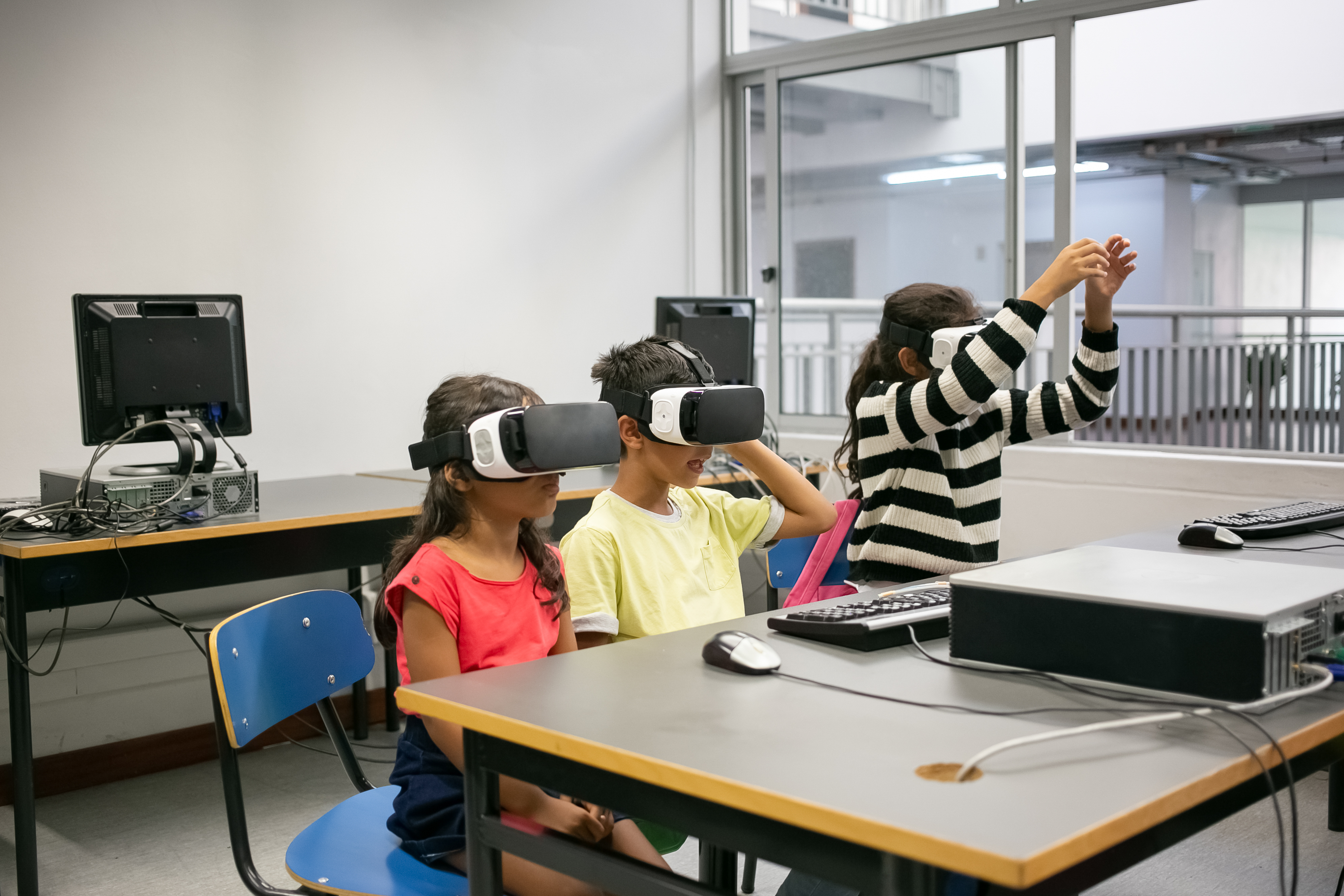Unlocking the Role of Technology in Modern Education
Every day, technology is altering the way that students learn. This is the role of technology in modern education. This makes lessons enjoyable, flexible, and simple to understand.
Technology supports a personalized learning experience for every child. Simply put, children can learn at their own pace. They stay curious and learn new concepts.
Additionally, it develops essential 21st-century skills. Consider creativity, problem-solving, and teamwork. These abilities equip students for obstacles they may face in the real world.
Dauha Al-Uloom International School's CBSE curriculum heavily relies on technology. It fosters competent, confident students.
What Is the Role of Technology in Education in Modern Times?
The classroom is changing. This is due to the role of technology in education in modern times. Teachers use more than just books and boards.
Students explore lessons in new ways. They use their devices and apps. They can retain ideas longer and comprehend subjects more quickly as a result.
The CBSE syllabus
is followed by schools such as Dauha Al-Uloom International School. It mixes technology with everything. This helps students face the world's challenges.
Here’s how using technology in the classroom helps:
Personalized learning: Kids set their own pace for work.
Interactive lessons: Games, videos, and simulations make learning a joy.
Global access: Students can use online resources. They can explore knowledge outside of the classroom.
Early digital literacy: Students gain skills they will need for the future.
Technology also helps teachers. They track progress. They give instant feedback. They adjust lessons for student needs. This creates a smarter and more engaging classroom.
Schools combine old teaching methods with digital tools. This makes students ready for the digital age. The role of technology in education in modern times is to make learning active, open to all, and important.
How Technology Is Used in the Classroom at Dauha Al-Uloom International School
Dauha Al-Uloom International School believes in using technology in the classroom early. The program kicks off in Grade 1. Students also get time in a great computer lab.
The school also has a language lab. This helps students improve communication skills using audio-visual tools.
Interactive tools make lessons engaging and entertaining. Teachers use instructional videos, smart boards, and simulations to demonstrate concepts.
We use these key technology resources for the classroom:
Computer Lab: interactive online learning that begins in the first grade.
Language Lab: enhances speaking, listening, and language skills.
Workshops Workshops
: Hands-on learning activities include crafts, gardening, and STEM projects.
Interactive Tools: AR, VR, and multimedia lessons bring subjects to life.
Students can learn at their own pace with the aid of these resources. They promote creativity, curiosity, and teamwork.
Teachers are able to provide immediate feedback and monitor student progress. Every student benefits from more individualized and efficient learning as a result.
The school mixes all these tools. This makes the classroom fun and helps students work together. Interactive technology tools in the classroom get students ready for today's tough lessons.
Also look into our facilities.
What Are the Benefits of Technology in Education?
The benefits of technology in education are more than just using computers. It alters the way pupils process information, make decisions, and perceive the world.
Technology is used daily at Dauha Al-Uloom International School. The benefits of technology in education are clear. It lets teachers build a special, personalized learning experience for each kid.
We'll share some key advantages of technology in education now:
Interactive learning: First, think about interactive technology tools in the classroom. They simply make learning fun!. They also make them easy to understand.
Engagement and focus: Games, movies, and pictures sustain the attention of pupils.
Flexible learning: Students can learn at their preferred pace at any time and from anywhere.
Instant access to information: Quick answers are easily accessible on the internet. It also offers new ideas for projects.
Better collaboration: Online platforms help students work together and share thoughts.
Digital learning resources: Tools like e-books and educational apps make studying more exciting.
Technology also helps enhance teaching methods. Teachers follow progress. Quick answers can be found on the internet. They then change lessons to fit student needs.
At Dauha Al-Uloom, the goal is not just academic success—it’s preparing students for life. Technology resources for the classroom help students develop future skills. They gain problem-solving, collaboration, and digital tool skills.
This approach helps kids grow both creatively and technically. The school mainly teaches science, coding, and innovation. Do you want to read more? Take a look at The Importance of STEM Education: Preparing Indian Students for a Global Future
"The Importance of STEM Education: Preparing Indian Students for a Global Future."
Children expand their confidence and creativity outside of school. They do this through clubs, arts, and sports. You can read aboutthe benefits of extracurricular activities for every student the benefits of extracurricular activities for every student. This will show how these activities help every child.
When done right, using technology in the classroom is great; it makes learning balanced and fun. It makes learning balanced and fun. It inspires students to explore, question, and achieve.
The Advantages and Challenges of Using Technology in the Classroom
The role of technology in education: pros and cons helps us see the bright and difficult aspects of school today. Tech makes classes fun and easy to change. But it brings new issues for schools and teachers. We must consider both sides.
Benefits of Technology Use in the Classroom:
Videos, games, and apps add fun and excitement to schoolwork.
Online tools make it simple for students to team up on projects.
Because learning is flexible, children can attend classes at their convenience.
Teachers can quickly assess how well pupils perform using online tests and tools.
Ultimately, technology benefits all students. It accommodates different objectives and styles of learning.
Challenges of Using Technology in Education:
Digital divide in education: Lack of equal access to network connections and gadgets.
Lack of teacher training: Teachers unfamiliar with technology could be a challenge.
Distraction risk: Social media and games may lead to students losing focus.
Tech dependency: Overuse of screens can have adverse effects on health and focus.
Privacy concerns: Data and online safety must be secured in schools.
Teachers at Dauha Al-Uloom International School address these issues in a thoughtful, well-rounded manner. The school focuses on building both digital and emotional skills.
Students don't just learn to use devices. They practice thinking, sharing, and caring. This holistic approach promotes the mental and emotional growth of the kids. Read more about it in Building Futures Through Mental Health Awareness in Schools
Building Futures Through Mental Health Awareness in Schools.
Handle the risks and the rewards of technology. Then, using technology in the classroom promotes self-assurance, inventiveness, and the capacity for lifelong learning in pupils.


